Abstract
Matthews, H. R., Meade, J. B., and Evans, C. C. (1974).Thorax, 29, 343-348. Significance of prolonged peripheral vasoconstriction after open-heart surgery. Abnormally prolonged peripheral vasoconstriction has been detected prospectively by means of a toe temperature nomogram in 15 (11·5%) out of 131 patients following cardiopulmonary bypass. This state has been associated with a 53% incidence of hospital death, a detectable pathological cause in all cases, and in seven of the 15 cases it was the first or only evidence of a circulatory disorder. It is apparent that toe temperature monitoring after open-heart surgery gives early warning of a wide variety of potentially serious pathological processes, permitting effective treatment of the underlying cause before irreversible changes occur. It has become an indispensable part of routine postoperative care in our unit and is regarded as the simplest and most effective method of monitoring the circulation currently available.
Full text
PDF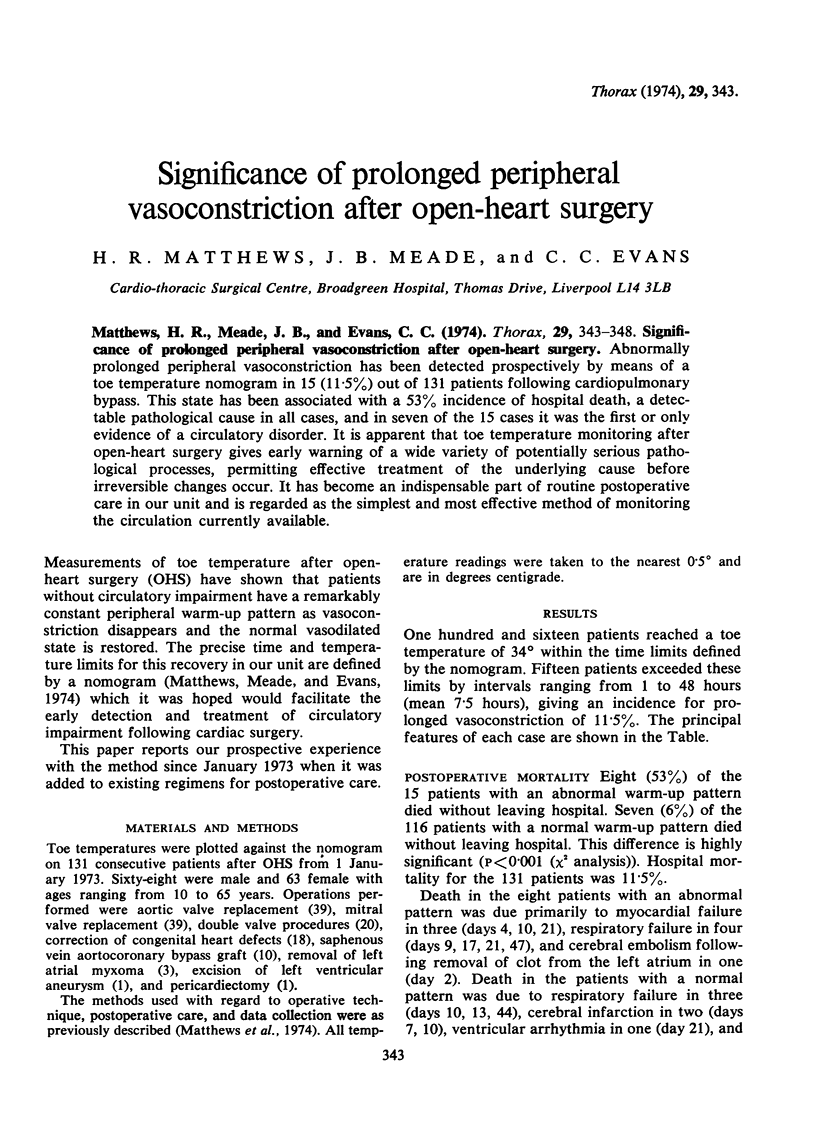
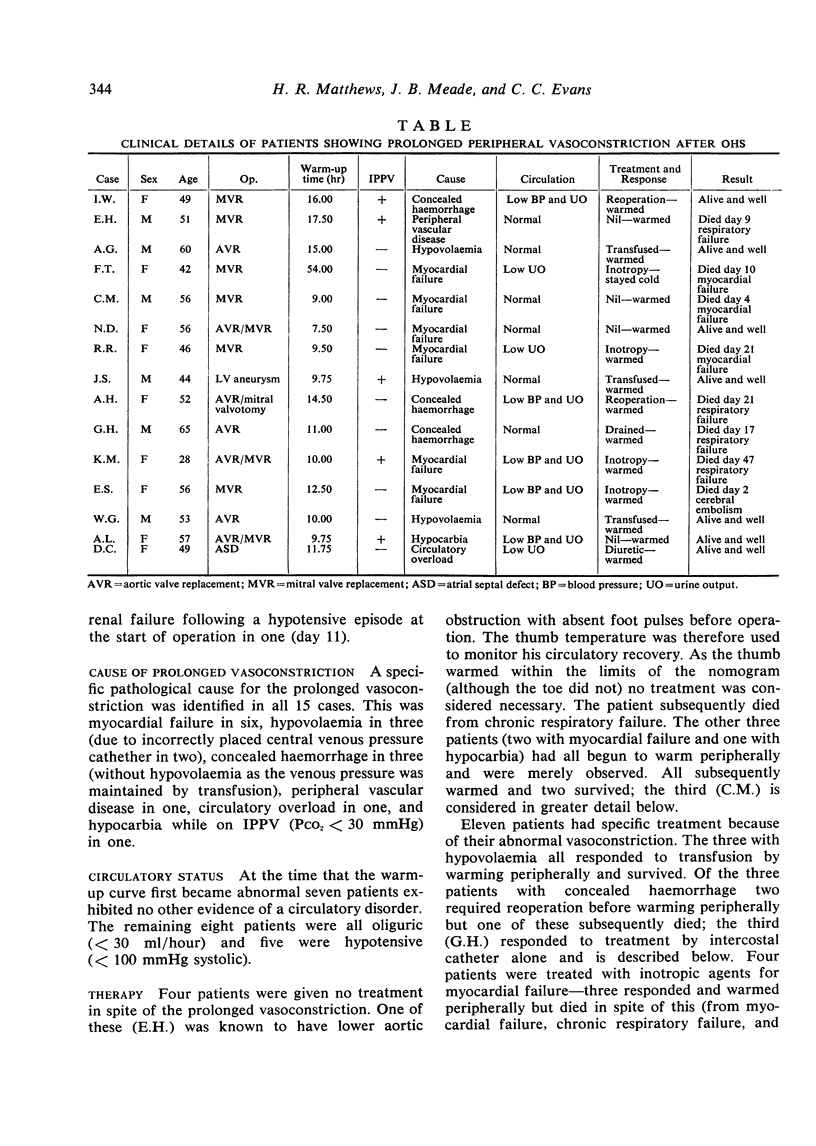
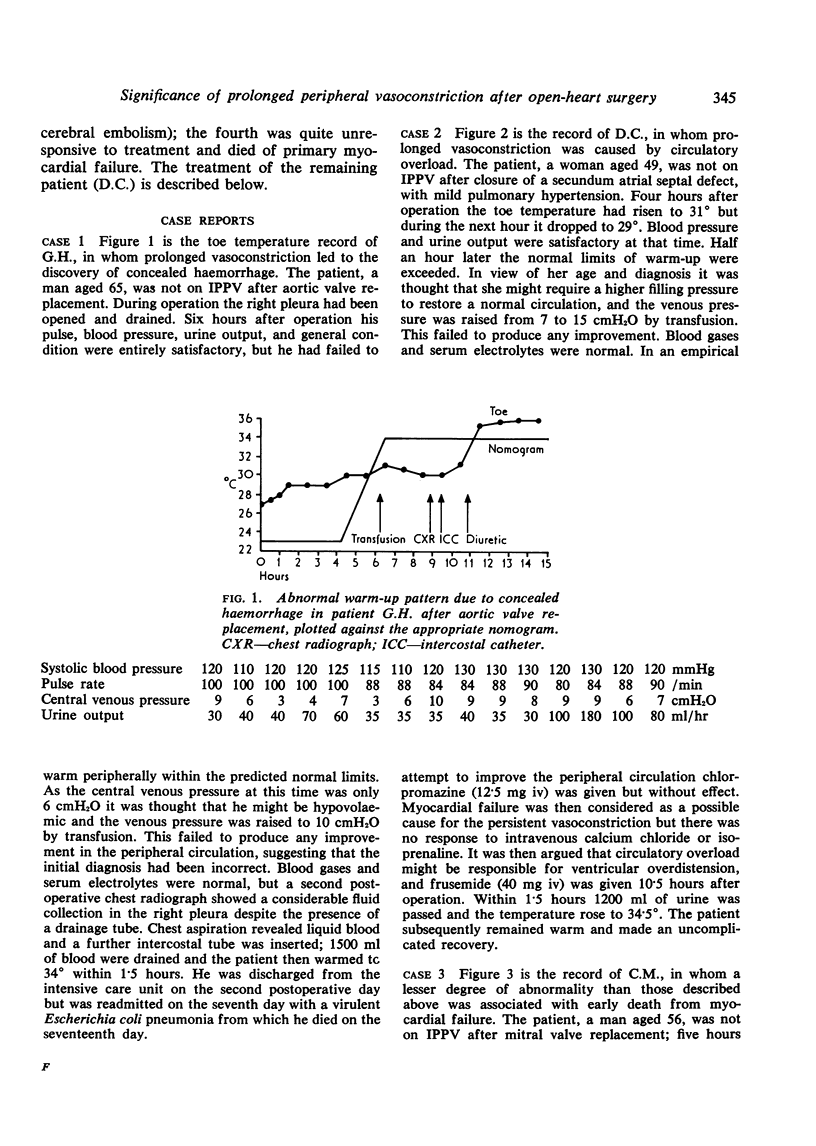
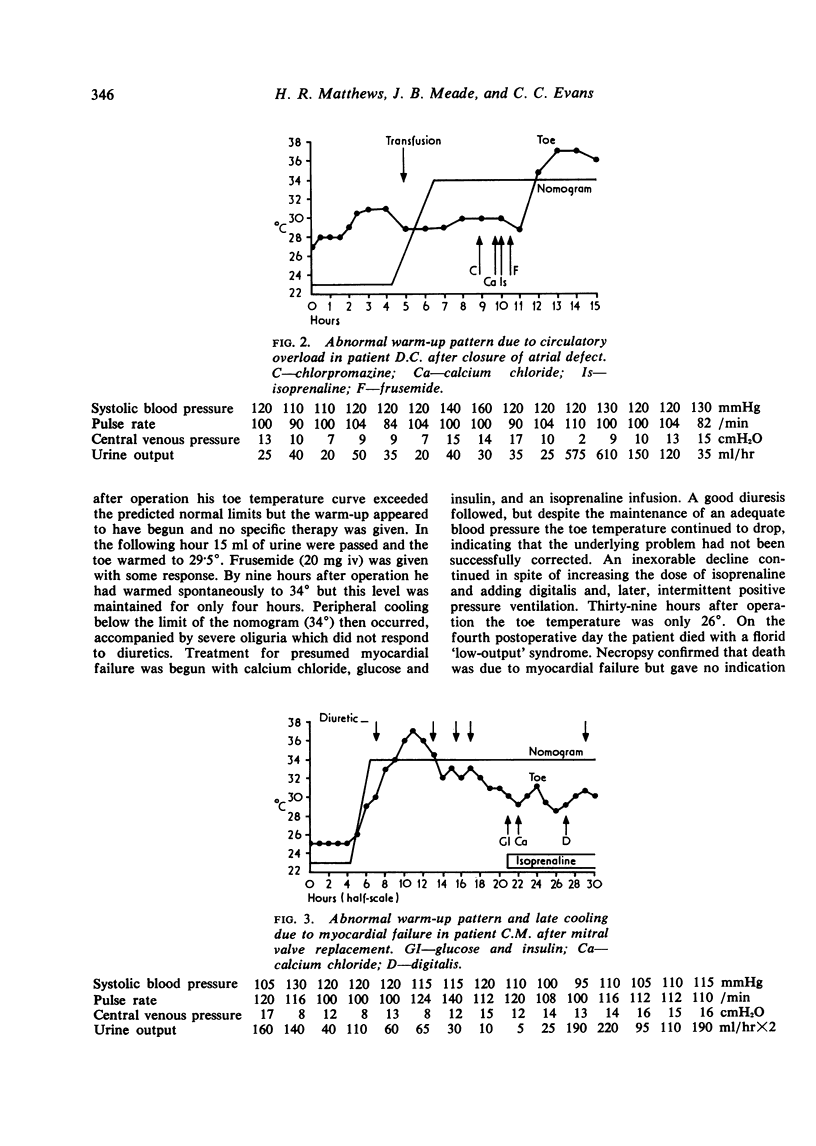
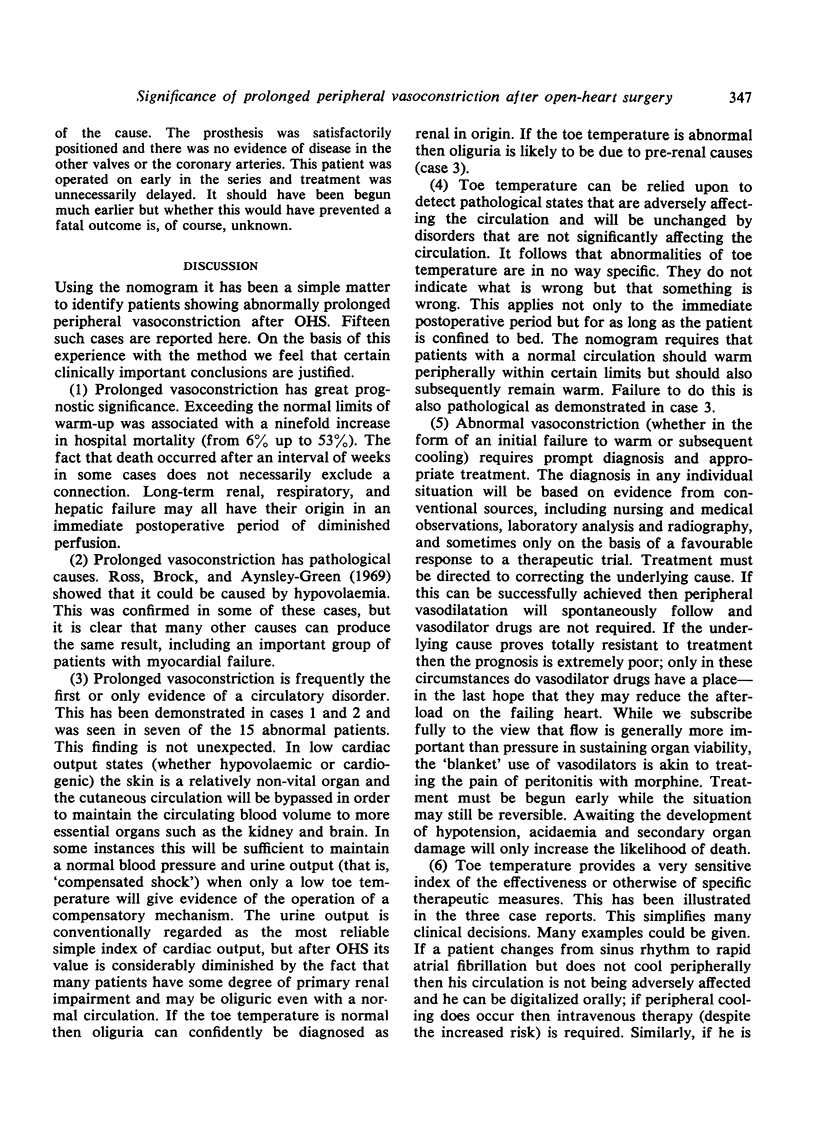
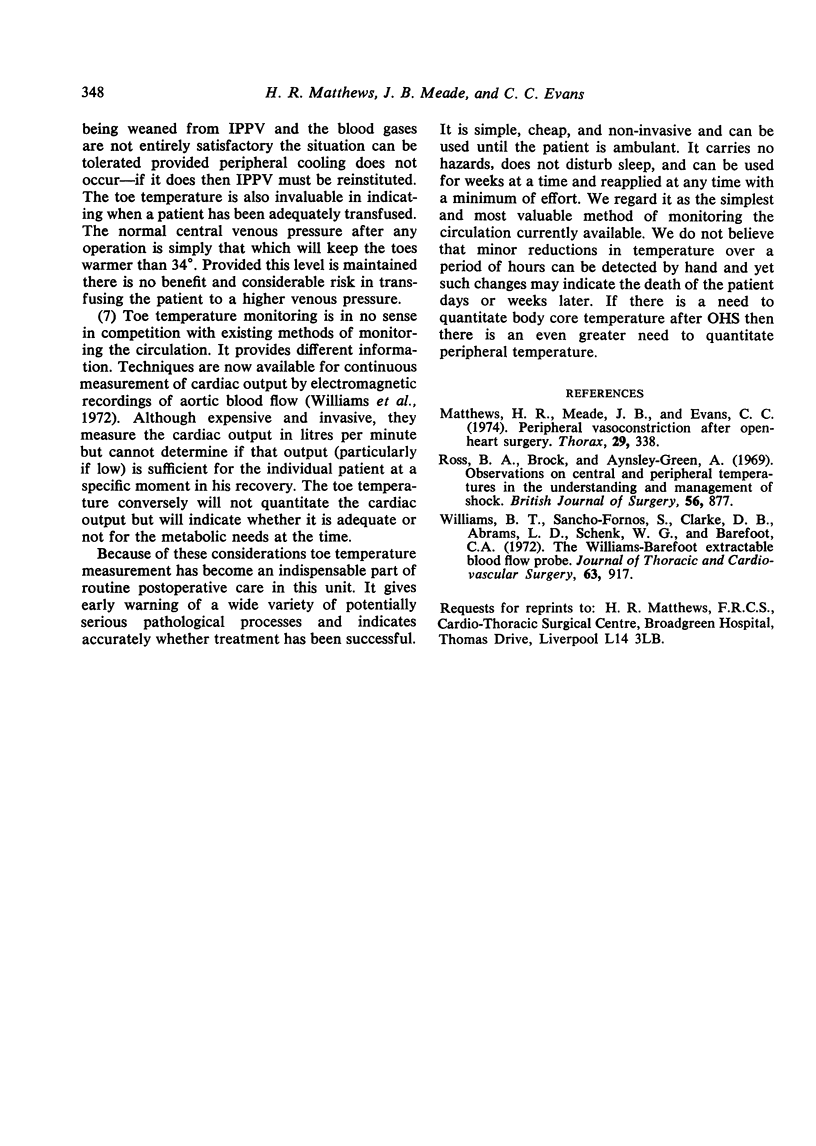
Selected References
These references are in PubMed. This may not be the complete list of references from this article.
- Matthews H. R., Meade J. B., Evans C. C. Peripheral vasoconstriction after open-heart surgery. Thorax. 1974 May;29(3):338–342. doi: 10.1136/thx.29.3.338. [DOI] [PMC free article] [PubMed] [Google Scholar]
- Ross B. A., Brock L., Aynsley-Green A. Observations on central and peripheral temperatures in the understanding and management of shock. Br J Surg. 1969 Dec;56(12):877–882. doi: 10.1002/bjs.1800561202. [DOI] [PubMed] [Google Scholar]
- Williams B. T., Sancho-Fornos S., Clarke D. B., Abrams L. D., Schenk W. G., Jr, Barefoot C. A. The Williams-Barefoot extractable blood flow probe. Design, transducer characteristics, and clinical application in cardiac surgery. J Thorac Cardiovasc Surg. 1972 Jun;63(6):917–921. [PubMed] [Google Scholar]


